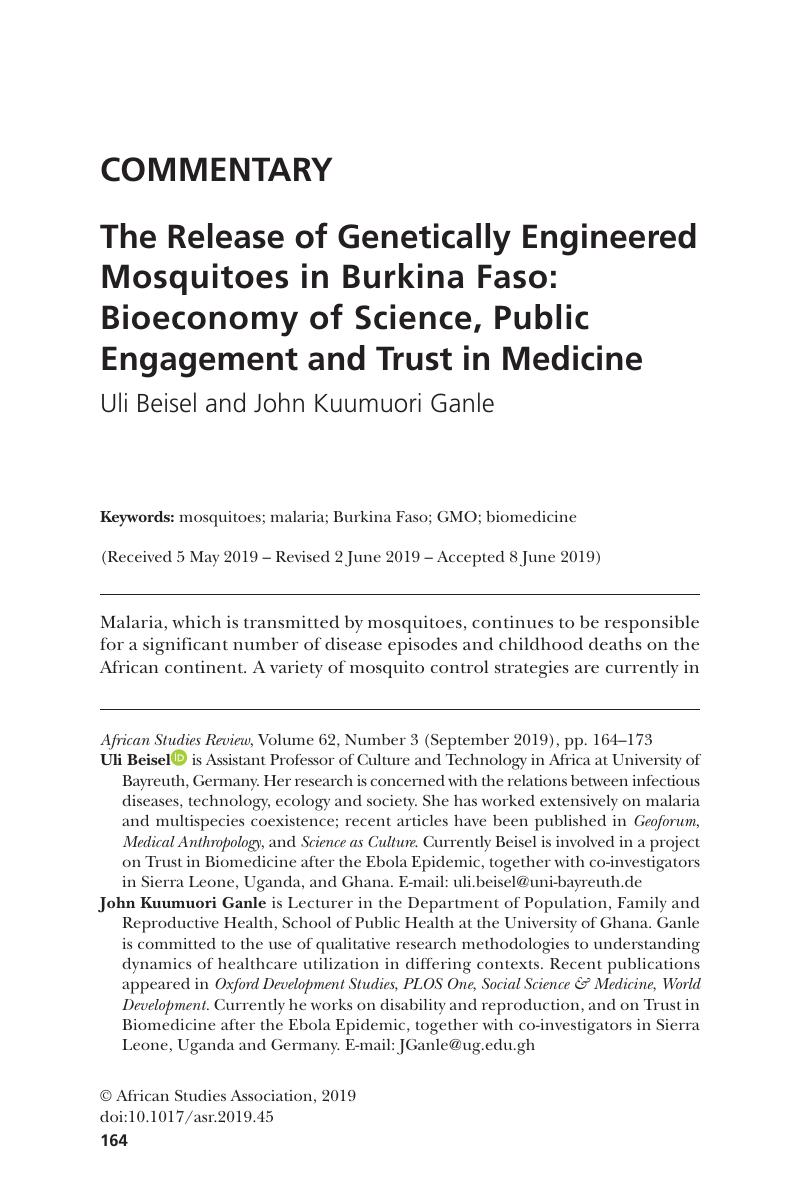Crossref Citations
This article has been cited by the following publications. This list is generated based on data provided by Crossref.
Famakinde, Damilare O.
2020.
Public health concerns over gene-drive mosquitoes: will future use of gene-drive snails for schistosomiasis control gain increased level of community acceptance?.
Pathogens and Global Health,
Vol. 114,
Issue. 2,
p.
55.
Wilbanks, Rebecca
2021.
Genetic Control in Historical Perspective: The Legacy of India's Genetic Control of Mosquitoes Unit.
Hastings Center Report,
Vol. 51,
Issue. S2,
Hartley, Sarah
Smith, Robert D. J.
Kokotovich, Adam
Opesen, Chris
Habtewold, Tibebu
Ledingham, Katie
Raymond, Ben
and
Rwabukwali, Charles B.
2021.
Ugandan stakeholder hopes and concerns about gene drive mosquitoes for malaria control: new directions for gene drive risk governance.
Malaria Journal,
Vol. 20,
Issue. 1,
Graboyes, Melissa
and
Alidina, Zainab
2021.
African Studies Keyword: Malaria.
African Studies Review,
Vol. 64,
Issue. 4,
p.
959.
Bueno-Marí, Rubén
Drago, Andrea
Montalvo, Tomàs
Dutto, Moreno
and
Becker, Norbert
2022.
Ecology of diseases transmitted by mosquitoes to wildlife.
p.
225.
Graboyes, Melissa
Gallagher, Daphne
and
Tappan, Jennifer
2022.
Introduction to the special section: Histories of Global Health in Africa.
Health & Place,
Vol. 77,
Issue. ,
p.
102863.
Yates-Doerr, Emily
Carruth, Lauren
Lasco, Gideon
and
García-Meza, Rosario
2023.
Global Health Interventions: The Military, the Magic Bullet, the Deterministic Model—and Intervention Otherwise.
Annual Review of Anthropology,
Vol. 52,
Issue. 1,
p.
187.
Hartley, Sarah
Stelmach, Aleksandra
Opesen, Chris
Openjuru, George Ladaah
and
Neema, Stella
2024.
Talking About Gene Drive in Uganda: The Need for Science Communication to Underpin Engagement.
Science Communication,





